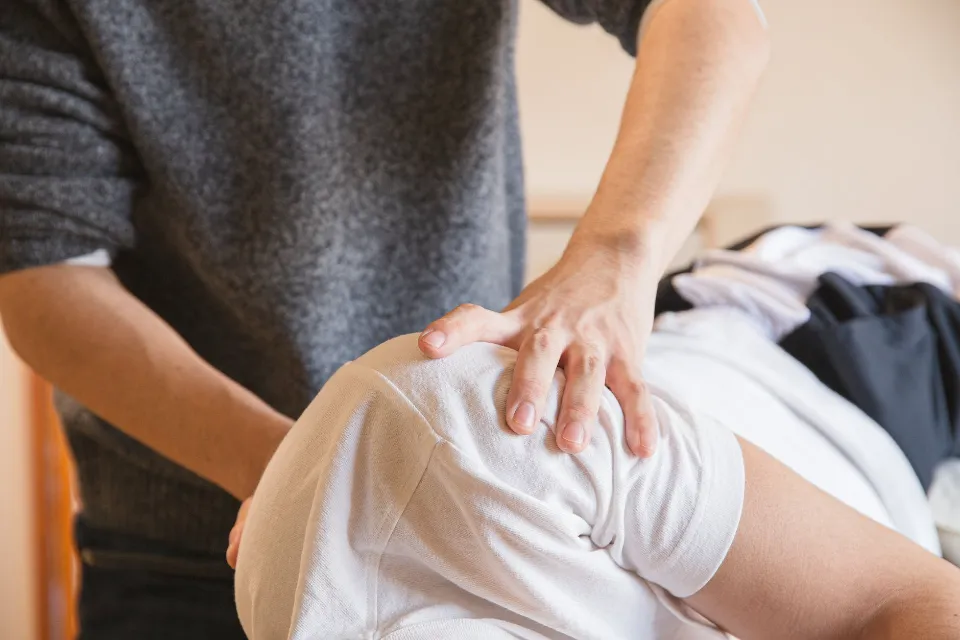When patients experience severe shoulder pain and find it difficult to raise their arms above their heads, shoulder replacement surgery is advised. Additionally, non-surgical treatments like medication, rest, and physical therapy are ineffective for reducing pain and enhancing the range of motion.
Doctors advise against doing a lot of things, such as driving, lifting weights, etc., to help you recover from shoulder replacement surgery. What specific additional activities should I avoid following shoulder replacement surgery? The article below will tell you the answer.
Read more: What Can You Never Do After Hip Replacement: 8 Things! – Elder VIP
What is Shoulder Replacement Surgery?
More than any other joint in your body, your shoulder rotates through a wider range of motion. Your doctor may suggest replacement surgery if the pain is so severe that it prevents you from doing simple tasks like reaching into cabinets, sleeping soundly, or experiencing other symptoms. This procedure can relieve your pain and increase mobility.
By replacing damaged shoulder joint parts with artificial components known as prostheses, a shoulder replacement attempts to remove the cause of pain and dysfunction. Osteoarthritis, rotator cuff tear arthropathy, avascular necrosis, and rheumatoid arthritis are the most frequent conditions that call for shoulder replacement surgery. Your pain will be reduced, your strength will be enhanced, your range of motion will be increased, and you will be able to use your shoulder and arm.
Your surgeon will have a conversation with you regarding what type of shoulder replacement you may need. There are four options:
- Hemiarthroplasty: In this procedure, only the ball and stem are changed. Your natural socket and the stem that is attached to the ball are articulated.
- Resurfacing Hemiarthroplasty: This entails inserting a prosthesis that resembles a cap without a stem over the humeral head’s joint surface.
- Anatomic Total Shoulder Replacement: A highly polished metal ball attached to a stem on the humeral side and a plastic cup on the glenoid socket replace the arthritic joint.
- Stemless Total Shoulder Arthroplasty: The metallic ball is attached to the upper arm without a stem in this bone-preserving variation of total shoulder replacement surgery.
- Reverse Total Shoulder Replacement: The joint is literally reversed in a reverse total shoulder replacement, with a metal ball being placed where the glenoid socket once was and a plastic cup being moved to the upper arm bone (humerus) by means of a stem and plastic cup.

What Are the Limitations After Shoulder Replacement?
During your recovery from shoulder surgery, here are some of the regular restrictions you can expect:
No Wetting of the Wound
Your incision will be bandaged up dry before you leave the hospital. Do not let the cut become muddy or wet. Daily dressing changes are possible, and it is not unusual for a small amount of blood to be present on the dressing. Wait until after your follow-up appointment to take a bath or a shower. Since the incision has not yet fully healed, getting the incision wet increases the risk of infection in the shoulder. If the doctor permits it, you can take a shower after the stitches are taken out and let the water run over the wound. Never soak an open wound in a bathtub or Jacuzzi. Once you are done with the shower, pat the wound dry.
No Heavy Lifting
For the first few weeks following surgery, you will typically be instructed by your surgeon to lift no more than the weight of a coffee cup. Your shoulder will start to get stronger and more flexible as you begin physical therapy, and as your therapy advances, your physical therapist will give you recommendations on the range of weights you can lift.
No Lift Arms
You won’t be permitted to frequently raise your arm or reach in the days and weeks after surgery. This could put stress on your new joint. Over time, your shoulder will become stronger and more mobile, and your medical team and therapists will teach you how to do so safely.
No Driving
The range of motion is constrained after shoulder surgery. Furthermore, you won’t have much arm strength, so shoulder specialists typically advise against driving for the first six weeks. As you recover, you might also need to take some potent painkillers, which can impair your judgment and reaction time.

No Support
When you bend or lean forward, you may place your arm on a table or countertop for support. Be sure to support your body weight solely with the other arm. Use the arm you didn’t have surgery on to get out of bed or the sofa. Resting your weight on your new shoulder until it is completely healed could be painful and uncomfortable.
No Overmedication
Aspirin, which helps prevent blood clots, anti-inflammatory drugs, and painkillers will all be prescribed to you. Only take the painkiller if you are in pain. As directed, take the anti-inflammatory medication.
Other Reminders
- Follow your doctor’s instructions when driving. At the time of discharge, however, you will need to have a driver ready to take you home.
- For the initial two to four weeks, refrain from lifting anything heavier than a glass of water.
- Take a two-month break from lifting anything heavy.
- Within the pain’s limits, start moving your arm actively again.
- As directed by your physical therapist and other healthcare professionals, continue your at-home exercises. Be careful – don’t overdo it!
- Do not push yourself out of a chair or bed using your operative arm.
- Don’t do any repetitive heavy lifting. Participate in non-contact sports.
- Avoid placing your arm in any “extreme position” for the first six weeks after surgery. An example is to not stretch your arm straight out to the side or behind your back.
Summary
The recovery process, which starts right away after the surgery, has a greater influence on the surgery’s outcome. There will be some limitations during the healing process, especially in the first six weeks following your shoulder replacement surgery. You are unable to drive, lift objects that are heavy, etc. There are some additional considerations that have been listed for you.
Read a whole introduction of hip & shoulder & knee replacement: A Complete Guidance of Knee & Hip & Shoulder Replacement (2023) – Elder VIP



